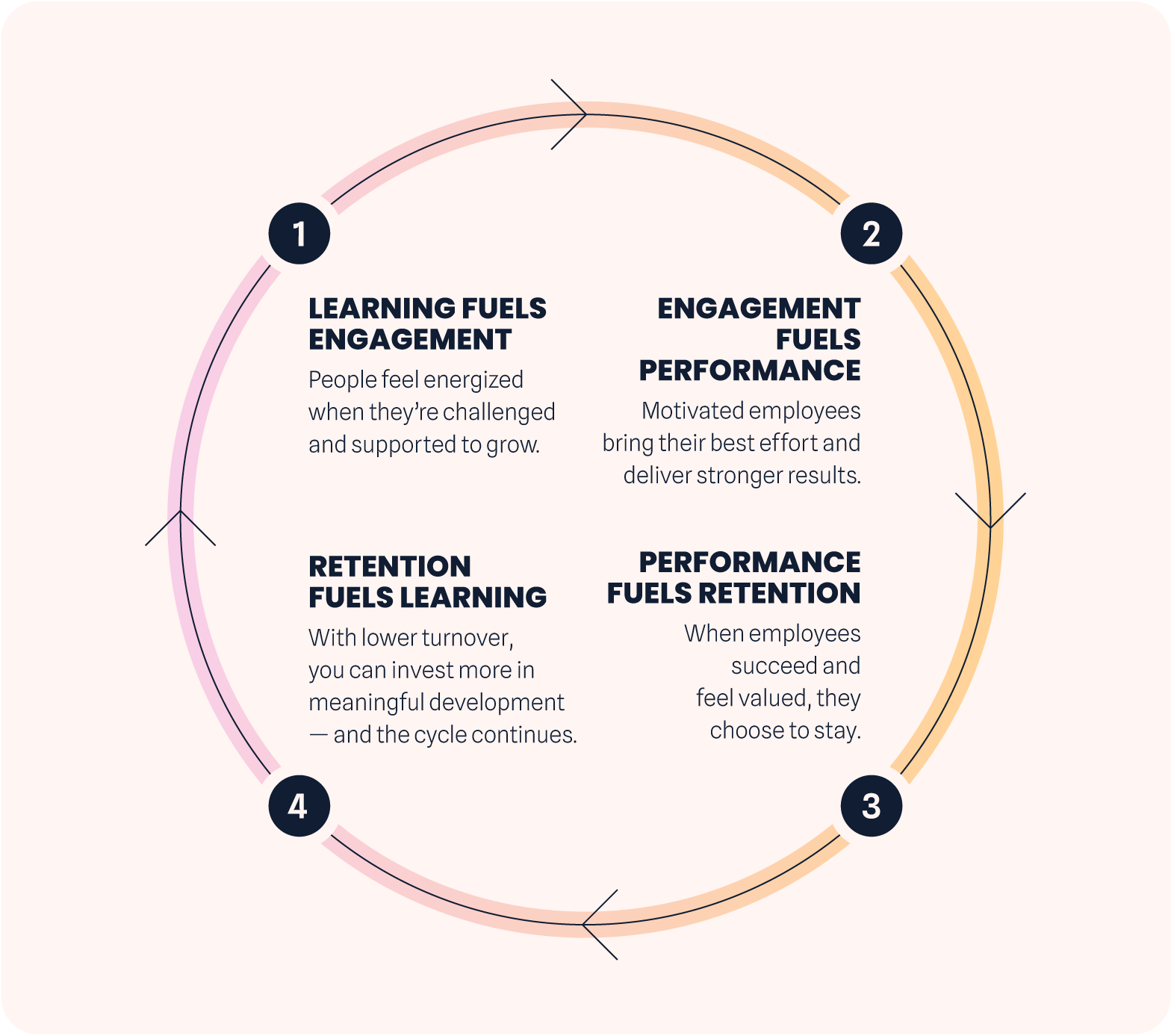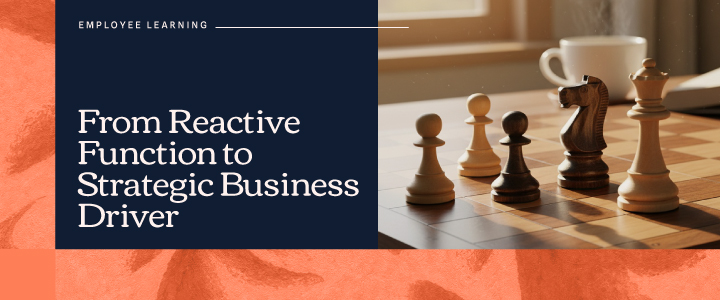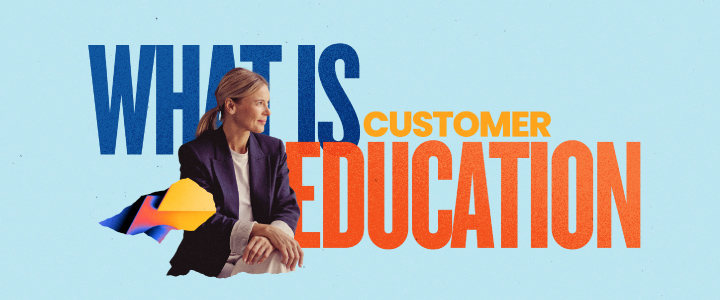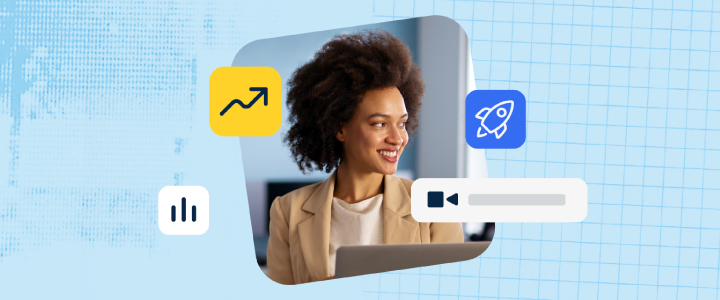
7 min reading time
From Hire to Higher: How Learning, Mobility, and Competency Frameworks Drive Employee Retention
What you’ll learn:
Employee retention isn’t about perks—it’s about growth. In this post, we explore how learning, internal mobility, and competency frameworks help businesses reduce turnover, keep top talent engaged, and build future leaders. Discover practical strategies and metrics that show the real impact of development on retention, including:
- Why learning and development is one of the most effective retention strategies.
- How internal mobility programs keep employees engaged and lower hiring costs.
- Ways competency frameworks create clarity and fairness in career growth.
Employee retention is one of the biggest challenges in business today.
This year, 93% of organizations are worried about keeping their people. And honestly, who can blame them? Almost half of employees say they’re considering leaving in the next 12 months.
But here’s the thing: there’s a quiet hero in all of this: learning and development. It turns out, it’s the #1 strategy to keep employees engaged and committed.
Because for your people, it’s not just about perks or pay raises. It’s about creating real opportunities to grow, build their skills, and feel like they belong.
So, let’s explore why employees leave, what truly keeps them engaged, and how your learning team can use tools like competency frameworks and internal mobility programs to make retention something you own—not just hope for.
Why Do Employees Leave (And What’s the Cost)?
Employees rarely quit on a whim. More often, it’s a slow build: frustration, disengagement, or the sense that their career has stalled.
Here are some of the biggest risk factors for employee turnover:
- Growth opportunities: When employees can’t see a path forward—whether that’s promotions, stretch assignments, or visibility into what’s next—they start looking elsewhere.
- Clear expectations: Without well-defined competencies and goals, employees are left guessing about what success looks like.
- Skill development: Employees don’t just want titles—they want to keep learning. If there is no opportunity to build deeper expertise, then why stay?
- Connection to business goals: Purpose drives commitment. When employees fail to see how their work connects to wider company objectives, they’re not motivated to give their best.
As a learning leader, you’re uniquely positioned to address these factors. Many of the biggest drivers of turnover are preventable when development is at the center of your strategy.
Employee Learning & Development: Your New Retention Strategy
You already know that when learning is done right, it transforms your people and your business. It gives employees the skills to thrive today, the confidence to aim for tomorrow, and the clarity to see a future with your company.
But achieving this isn’t about rolling out course after course. Instead, it’s about creating focused, personalized learning experiences that connect to individual ambitions and deliver measurable impact for your business.
So, how can you make learning a true driver of retention and growth?
1. Keep people growing
Employees who feel they’re developing are far more likely to stay. McKinsey research shows that purpose, strong relationships, and supportive environments are key to long-term commitment—and you can foster all three through meaningful learning opportunities.
2. Show them they matter
Offering development sends a clear signal that employees are more than just their current role. You’re investing in their future, not just their present—and that builds loyalty while reducing turnover risk.
3. Open up career paths
Clear, structured development helps employees gain the skills they need to move into new roles faster. That not only lowers hiring costs but also protects the institutional knowledge you’ve worked hard to build.
4. Stay agile
As industries shift, upskilling ensures your workforce can adapt to new technologies, changing customer needs, and market demands. It keeps your organization competitive—and resilient.
5. Grow leaders from within
By identifying and preparing future leaders early, you reduce the need to rely on external hires. Even better, those leaders already understand your culture and values, so they’re ready to hit the ground running.
Just know, as an L&D leader, you have the power to do more than deliver training—you can shape the kind of employee experience that keeps people engaged, committed, and ready to grow with your business.
The Link Between Learning & Development, Engagement, And Employee Retention
Development isn’t just about building skills—it’s about sparking engagement. When your people feel like they’re growing, they’re more motivated, more productive, and more connected to your mission.
Think of it as a loop, where each learning experience propels your team forward and strengthens their connection to your company. The more you invest in meaningful development, the more it drives retention, performance, and long-term loyalty—a true win-win for your business and your people.

This is why learning initiatives, when designed well, aren’t just “HR programs.” They’re business strategies.
How to Build a Culture of Internal Mobility
Internal mobility isn’t a new idea, but it’s finally getting the attention it deserves. For some, it might still sound like HR jargon—just promotions or title changes. In reality, it’s far more practical and far more impactful.
At its core, internal mobility is about giving your people the chance to step into new roles, projects, or responsibilities within your organization instead of losing them to opportunities elsewhere. And in today’s workplace, it matters more than ever.
Why It Matters:
- Keep your top talent engaged: High performers thrive when they’re challenged. Offering new roles, projects, or responsibilities shows they don’t need to look elsewhere for growth.
- Close skills gaps faster: Promoting from within accelerates productivity and preserves institutional knowledge.
- Signal career growth is possible: When employees see advancement is based on skill and effort—not just external hiring—they’re more likely to stay and invest in your company’s success.
Your Playbook For Internal Mobility:
1. Make opportunities visible: Use your LMS or internal comms to highlight open roles before posting externally. Employees should never have to guess what’s possible.
2. Support role transitions: Structured onboarding, mentoring, and targeted upskilling set employees up for success in new roles.
3. Encourage lateral moves: Growth isn’t always upward. Cross-functional moves broaden skills, deepen collaboration, and create resilient teams.
4. Design role-specific learning journeys: Build programs in your LMS that prepare employees for their next role, smoothing transitions and boosting confidence.
5. Track and measure progress: Monitor skills development to identify high-potential employees early, address gaps, and ensure mobility supports business goals.
6. Celebrate movement: Publicly recognize promotions, lateral moves, and internal role changes. Success stories inspire others and reinforce that career growth is real—and achievable.
How To Introduce And Apply Competency Frameworks
If you’re thinking about employee development, the question isn’t just what skills should people learn—it’s how do you define, measure, and grow the capabilities that matter most to your business? That’s exactly where a competency framework comes in.
Think of it this way:
- For employees, it’s a roadmap showing how to grow.
- For managers, it’s a fair and transparent performance tool.
- For the business, it’s a way to align learning with strategy.
So, how do you make it work in practice?
1. Map out role competencies
Work with managers and subject matter experts to define the technical skills, soft skills, and behaviors each role requires now—and will need in the future. This ensures your framework reflects day-to-day realities and long-term business priorities.
2. Connect competencies to learning
Link each competency to courses, resources, or on-the-job experiences. This turns a static framework into a living tool employees can act on—helping them grow, hit their targets, and see a future within your company.
3. Review and update regularly.
Industries evolve fast. Revisiting your framework at least once a year keeps it relevant and prevents outdated expectations from derailing development or agility.
4. Communicate expectations clearly.
Make the framework visible, easy to understand, and part of regular conversations. Employees should always know how progress is measured and where to focus.
5. Recognize growth
Celebrate when someone masters a skill or levels up. Recognition motivates not just the individual but also inspires others to engage.
6. Integrate with your LMS
Embedding the framework in your LMS (ideally linked to your HRIS) lets employees see their progress in real time and helps managers spot high-potential talent or identify where extra support is needed.
Measuring Success: Employee Retention Metrics That Matter
Talking about development is one thing. Showing its impact is where you really land with leadership. Focus on metrics that tell a clear story:
- Retention rate: Are employees with structured learning paths staying longer?
- Internal hire rate: How many roles are filled from within?
- Time-to-productivity: How quickly do internal movers and new hires hit full performance?
- Skills progression: Track growth in competencies at individual and team levels, tied to business outcomes.
- Engagement scores: See how learning opportunities influence morale and commitment.
- A Quick-Start Checklist for L&D Leaders
Spot your biggest risks: Use turnover data, exit interviews, and surveys to identify roles or teams most at risk of leaving.
- Clarify what success looks like: Define the skills and behaviors critical to these roles so employees know exactly what’s expected.
- Build meaningful learning paths: Connect competencies to courses, mentoring, or stretch assignments so growth is tangible.
- Make mobility visible: Share internal roles and projects and highlight colleagues who’ve advanced—so employees can see the path is real.
- Track and share results: Measure retention, internal hires, and ramp-up time. Celebrate wins internally to rally leadership and externally to show employees their growth matters.
Bringing It All Together
Retention doesn’t happen by accident.
As a learning leader, you can create clarity by defining competencies, linking them to learning, and showing employees a path to grow. When development is aligned with mobility—and made easy to access through the right tools—employees don’t just see a job; they see a future.
That clarity keeps top performers engaged, reduces turnover, and builds a bench of leaders ready to step up.



